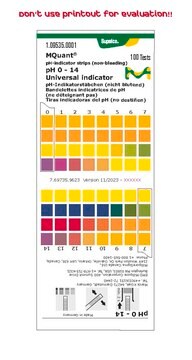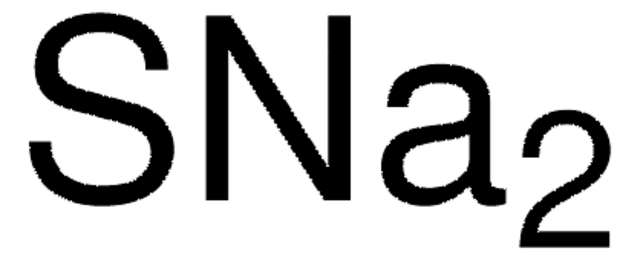28-2950
Hydroxyde de sodium
SAJ first grade, ≥95.0%
Synonyme(s) :
"Soude caustique"
About This Item
Produits recommandés
Qualité
SAJ first grade
Densité de vapeur
>1 (vs air)
Pression de vapeur
<18 mmHg ( 20 °C)
3 mmHg ( 37 °C)
Pureté
≥95.0%
Forme
solid
Disponibilité
available only in Japan
Pf
318 °C (lit.)
Solubilité
water: ~1260 g/L at 20 °C
Densité
2.13 g/cm3
Chaîne SMILES
[OH-].[Na+]
InChI
1S/Na.H2O/h;1H2/q+1;/p-1
Clé InChI
HEMHJVSKTPXQMS-UHFFFAOYSA-M
Vous recherchez des produits similaires ? Visite Guide de comparaison des produits
Application
- MOF-Enhanced Aluminosilicate Ceramic Membranes Using Non-Firing Processes for Pesticide Filtration and Phytochrome Removal.: This research utilizes sodium hydroxide in the development of MOF-enhanced aluminosilicate ceramic membranes. These membranes are crafted through non-firing processes, highlighting their utility in filtering pesticides and removing phytochromes, offering substantial benefits for environmental management and agricultural applications (Zhao L et al., 2024).
- Assessing the Acidic and Alkaline Recalcitrance of Covalently Modified Surface Amines on Ordered Mesoporous Carbon.: The study examines the resistance of covalently modified surface amines on mesoporous carbon to acidic and alkaline environments, where sodium hydroxide is used to test alkaline recalcitrance. This work is pivotal for applications in catalysis and material science (Kovach NC et al., 2024).
- Formation of plasmonic core/shell nanorods through ammonia-mediated dissolution of silver(i)oxide for ammonia monitoring.: This article discusses the role of sodium hydroxide in synthesizing plasmonic core/shell nanorods. The process involves ammonia-mediated dissolution, which is critical for developing sensors for ammonia detection in environmental monitoring (Ghorbanian E et al., 2024).
- High temperature corrosion and oxide scale formation of nickel in molten NaOH at various basicity levels.: Investigates the corrosion behavior and oxide scale formation on nickel in molten sodium hydroxide. This study is crucial for understanding material degradation in high-basicity environments, which has implications for industrial processes involving caustic substances (Stoffersen B et al., 2024).
- Long-term durability of discarded cork-based composites obtained by geopolymerization.: Focuses on the durability of cork-based composites treated with sodium hydroxide and geopolymerized. This research is significant for waste management and recycling processes, providing insights into sustainable material usage (Poggetto GD et al., 2024).
Mention d'avertissement
Danger
Mentions de danger
Classification des risques
Eye Dam. 1 - Met. Corr. 1 - Skin Corr. 1A
Code de la classe de stockage
8B - Non-combustible corrosive hazardous materials
Classe de danger pour l'eau (WGK)
WGK 1
Point d'éclair (°F)
Not applicable
Point d'éclair (°C)
Not applicable
Certificats d'analyse (COA)
Recherchez un Certificats d'analyse (COA) en saisissant le numéro de lot du produit. Les numéros de lot figurent sur l'étiquette du produit après les mots "Lot" ou "Batch".
Déjà en possession de ce produit ?
Retrouvez la documentation relative aux produits que vous avez récemment achetés dans la Bibliothèque de documents.
Notre équipe de scientifiques dispose d'une expérience dans tous les secteurs de la recherche, notamment en sciences de la vie, science des matériaux, synthèse chimique, chromatographie, analyse et dans de nombreux autres domaines..
Contacter notre Service technique





